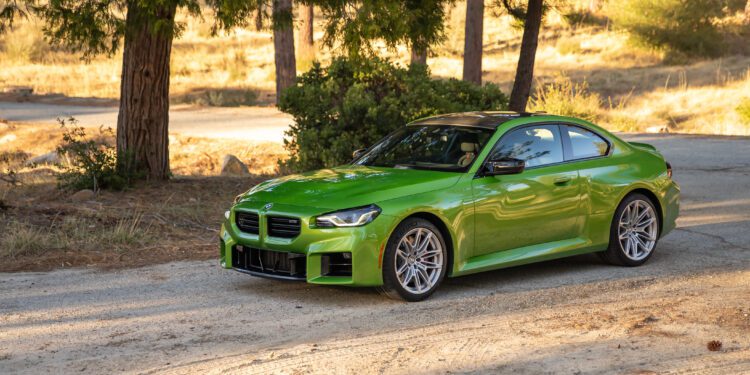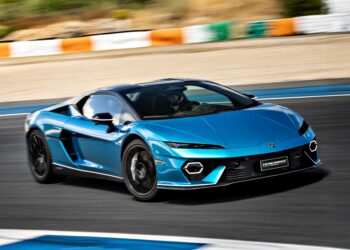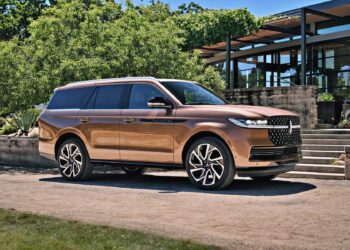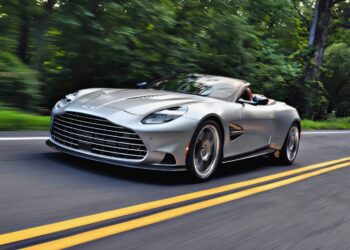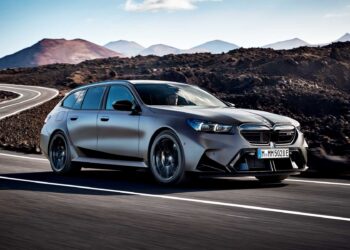If you wanted to distill this review into being nothing more than a lengthy report card, the 2025 BMW M2 would get straight As. For the $69,375 this two-door starts at, including a $1,175 destination fee, it is a performance bargain. BMW might price it similarly to the Mercedes-AMG CLA 45 S or the Audi RS 3, but the rear-drive M2 is worlds away from a real-world performance perspective, punching way above its weight.
BMW’s entry-level M car received major updates as it moved from its first F87 generation to this second-gen G87 model. It’s now faster, more powerful, and better handling than its predecessor courtesy of componentry borrowed from the larger M3 Sedan and M4 Coupe. Yet despite its improved athleticism, the M2 is now a far more approachable machine thanks to its slightly more relaxed persona.
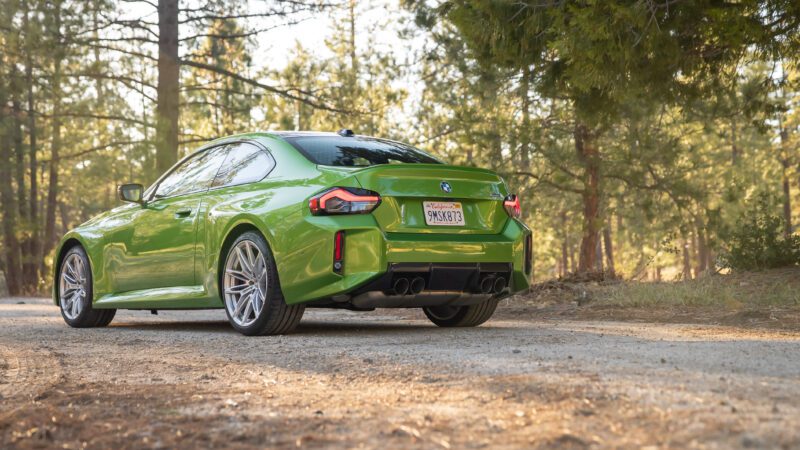
For 2025, its turbocharged 3.0-liter inline-six now produces 473 horsepower thanks to a 20-hp bump, gets the latest iDrive 8.5-generation software, and sports an expanded options list, making it more customizable. Meanwhile, minor styling tweaks refine an exterior design, which, although polarizing at launch, has started to grow on me quite a bit. However, as technically impressive, well-priced, and easy to drive quickly as the M2 is, a handful of hurdles keep it from being the thrilling driver’s car it could be.
We’re now two years into the G87’s lifecycle, and a spicier Competition model is still MIA. And chances are that we won’t get one, as spy shots have recently showcased the German carmaker testing what’s rumored to be an upcoming M2 CS. This also means that it’s not likely that we’ll see a non-CS BMW M2 equipped with all-wheel drive, which isn’t necessarily a bad thing when you consider that this is one of the last cars still in production that offers the classic BMW M formula: a straight-six up front, a manual transmission in the middle, and power flowing to the rear wheels.
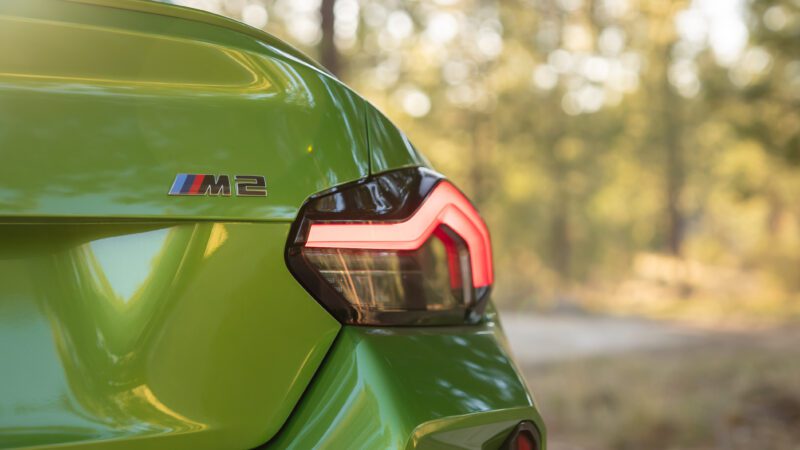
This example I’ve been driving is finished in a bright $3,000 shade of Java Green Metallic, featuring an increasingly elusive third pedal. It’s a dying breed as neither the aforementioned Audi nor Mercedes-AMG offer a manual transmission option, while the Porsche Boxster and Cayman are due to end production this year. If shifting gears manually is more your speed, your options at this price point will soon become the Ford Mustang Dark Horse, the Toyota Supra, and the BMW M2. And as I’m sure you’re well aware, two-thirds of that list has Bavarian roots.
Opting for the manual transmission has its pros and cons. On the positive side, M2’s equipped with clutch pedals weigh 53 fewer pounds than those optioned with ZF’s excellent eight-speed automatic. However, while this car’s 473-hp output is the same across both variants, the automatic-equipped car develops 37 additional pound-feet of torque at 443 lb-ft versus the stick car’s 406 lb-ft figure.

That said, the manual develops that peak figure up to 6,130 rpm while the automatic drops off after 5,620 rpm, well before this car’s 7,200-rpm redline. BMW intentionally differentiates the M2’s state of tune to better align with your chosen gearbox, a necessary revision given the auto’s shorter gear ratios and two extra speeds. Regardless of transmission, the BMW M2 tops out at an electronically limited 155-mph top speed, or 177 mph, when equipped with the M Driver’s Package.
If you drive both variants of this car back-to-back, it’ll take one flat-out sprint to realize how much quicker the automatic car feels in the real world. Its 3.9-second 0-60 mph time may only be 0.2 seconds quicker than the manual car’s 4.1-second time, but the automatic’s added torque pays significant dividends at lower RPMs and mid-range shove. However, if you experience the manual-equipped car in isolation, it’ll still feel rapid despite its tall gears because of its high power output.
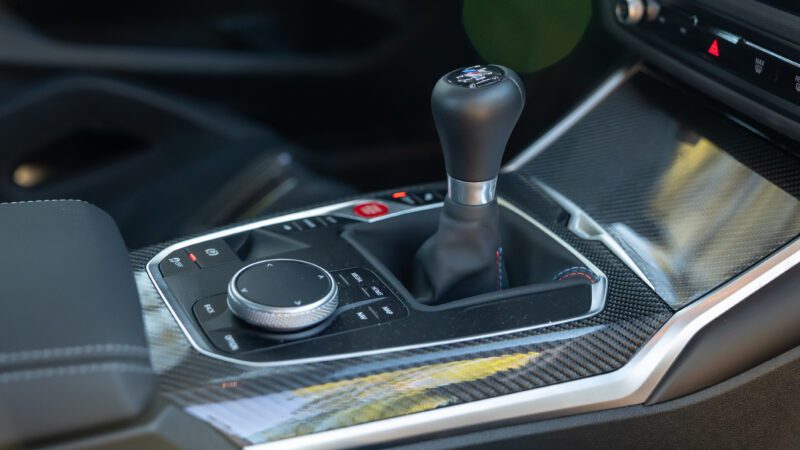
Much has been said about BMW’s manual transmissions over the years; not all of this chatter is positive. Yet, in an industry in which this gearbox configuration is increasingly rare, I can’t help but applaud the German carmaker for offering one. That said, it lacks the feeling of directness you’d want while shifting your two-door sports car. The 1-2 shift is oddly clunky, even at slow speeds, and it slots into gear with a disappointing vagueness at wide-open throttle, as if the linkage were made of rubber pieces.
There are ergonomic issues, too. My tester features the $9,900 Carbon Package, which gets you BMW’s supportive carbon-backed bucket seats. Part of what makes them great is just how low you’re able to adjust them, contributing to a proper sports car driving position. However, if this is your preferred way to sit, you might find your elbow touching this car’s center armrest between shifts. Throughout my week, I could raise the seat, compromising an otherwise perfect seating position, or angle my elbow upwards while shifting quickly. I chose the latter.

Thankfully, the BMW M2 features nicely spaced pedals, making heel-and-toe downshifts a breeze. Like the previous F87 model, the G87 will match your revs automatically on the way down, but thankfully doesn’t require you to turn off traction control to disable rev-matching like its predecessor.
On a winding back road, the BMW M2 displays how well M’s engineers can dial in a car to feel cohesive, stable, and, above all else, fast. As standard, this two-door gets Adaptive M Suspension with double wishbones up front and a multi-link setup in the rear. The German carmaker pulls weight from these components by building them from aluminum. M Compound brakes are your only stopping option with six-piston calipers up front and a single floating caliper in the rear.

While the M3 and M4’s carbon ceramics aren’t available even as an optional extra, you don’t need them outside of a track environment. The BMW M2 delivers consistent braking performance with a quick response from the pedal and the ability to modulate it effortlessly.
Equipped with Michelin Pilot Sport 4 S tires measuring 275/35 up front and 285/30 in the rear with a staggered 19 and 20-inch wheelset, this two-door has no problem putting all of its power down, thanks in part to BMW’s finely calibrated traction settings. These allow you to dial in the exact amount of rear-end slip you’re comfortable with while letting you swing this car’s rear end on command without putting it in a ditch.
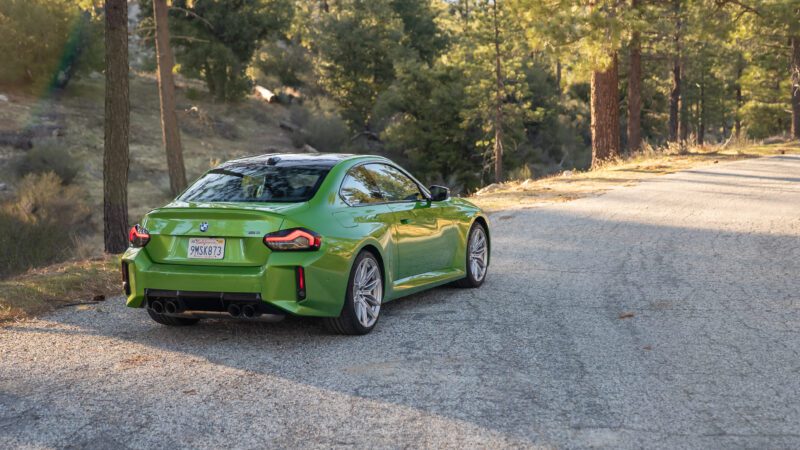
The BMW M2’s grip levels are equally astonishing, easily matching the performance of most sports cars on a twisty mountain road. Turn it in, and you’d be hard-pressed to guess that it weighs 3,814 pounds or just under 400 lb more than a manual-equipped 3,417-lb F87 M2. It’s only when you push hard that this car’s weight makes itself known, and its front end begs for a bit of trail braking to keep up in the bends.
Even as its rear end begins to let go, it does so more progressively than the spikey F87 M2, thanks partly to its longer wheelbase. Beneath its skin, the latest BMW M2 is primarily a shortened M4, with the pair sharing the same wheel, tire setup, and track width. This new suspension geometry allows this two-door to leap in back road performance, even if it comes at the cost of weight and a slightly less edgy persona.

This car’s added refinement works against it in a few ways. Its cabin is extremely well-isolated, which pays dividends on a daily commute but muffles the sounds emerging from its quad exhaust tips. The S58 turbocharged 3.0-liter inline-six that lives beneath the M2’s long hood sounds excellent, incorporating just the right amount of raspiness. It’s a significant upgrade over the rough-sounding S55 in the previous-gen M2 Competition. However, you’ll struggle to hear it from behind the wheel, so BMW opted to pipe in a digitized note via this car’s speakers.
This isolation disconnects you from the M2’s world-beating performance, like this car’s vague shifter. The steering manages to be worse still. Like the M3 and M4, the BMW M2 incorporates an ultra-fast rack, which can be adjusted independently of your powertrain, braking, and traction settings. Yet, in the most aggressive Sport Plus mode, it feels comically quick while picking up a fair bit of artificial weight. It’s a similar story to its throttle response, which becomes unnaturally responsive to the point of feeling like an on-off switch.

While the M2’s electric power steering is precise and made significantly better by dialing it back to the lower Sport or Comfort settings, it’s completely devoid of feedback. It won’t pick up weight as you load up this car’s front tires nor provide any road surface information with the wheel at the top dead center. As a result, you’re left to guess when you’re about to exceed front-end traction, an especially challenging task considering just how quiet those aforementioned Michelins are even as you push them.
While the G87 BMW M2 is undoubtedly a fast performance car that punches well above its weight on a back road, its high isolation levels and uncommunicative inputs limit how well it translates its tremendous speed into thrills behind the wheel.

As a sporty two-door to commute in, however, the BMW M2 is practically unmatched. With so much performance available on demand and its well-isolated cabin now working in your favor, it easily doubles as a grand tourer. It even rides well, thanks to a fairly compliant suspension setup when set to Comfort mode.
This 2025 model gets the latest iDrive 8.5 software with updated graphics. It works via a curved bezel incorporating a 12.3-inch digital instrument cluster and a 14.9-inch infotainment screen. Like the pre-LCI model, most of this car’s vital controls, such as its A/C settings, have frustratingly migrated to its touchscreen. Simultaneously, iDrive’s phone-like app layout makes navigating it on the move challenging.
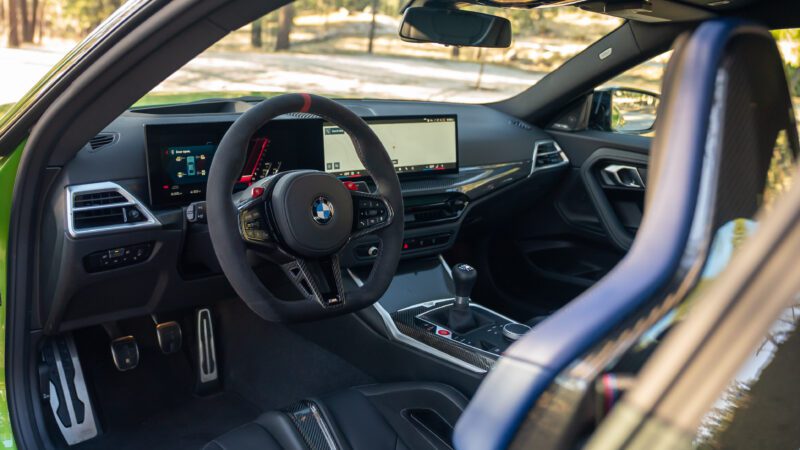
The M2’s cabin sports excellent materials with my tester offering a nice blend of leather, carbon fiber, and Alcantara on its new flat-bottom steering wheel. Its carbon bucket seats provide excellent support while remaining perfectly comfortable for longer drives, as long as you don’t mind the protruding carbon fiber trim piece that separates your legs. That said, the base M Sport seats are excellent and are now available in new color combinations.
The BMW M2 received more than its fair share of criticisms for its styling, some fired by yours truly, but its design has started to grow on me over the last two years. Part of it comes down to familiarity, but seeing this car in bright colors, such as this Java Green Metallic, makes a significant difference. For 2025, it’s available in new colors, including seven metallic finishes, three solid colors, and four BMW Individual hues. This two-door’s 930M-style wheels are available in a gloss black, a two-tone finish, or fully in silver.
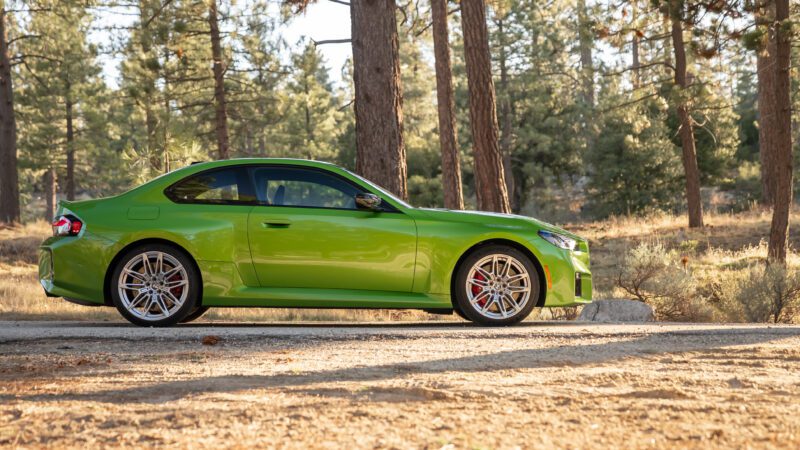
While the 2025 BMW M2 starts at $69,375, my well-optioned tester comes in at just over $85,000. However, as I learned during my drive of an automatic-equipped 2023 model, the M2’s best is available as standard, meaning that if this car’s carbon bits aren’t a must-have, you can have a vehicle whose performance will rival that of a base Porsche 911 for just about half the price.
That’s the BMW M2’s greatest strength. For those looking for the quickest and most capable sports car for the money, nothing compares. Not even rivals from Audi or Mercedes-AMG can replicate the backroad experience this M2 delivers. As a daily commuter, it’s unmatched thanks to its well-isolated cabin, well-appointed interior, and compliant ride.

However, as quick as the entry-level M is, a level of connectedness is missing. You’ll know what I mean if you’ve experienced an M3 from the E92 or E46 generations or even the F87 M2 that came before it. This might be one of the last vehicles to offer the classic BMW M formula, but it’s a few updates away from being the all-out driver’s car it could be.

